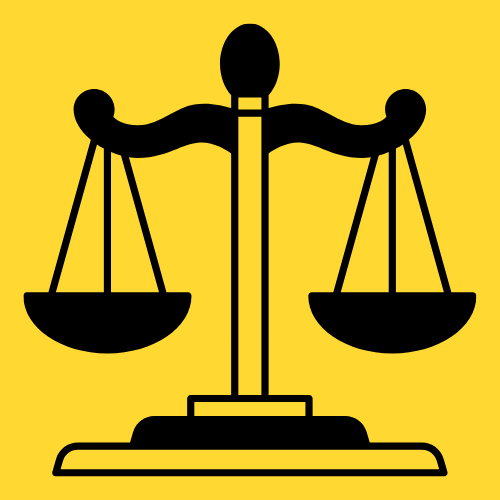INTRODUCTION
Execution
of decree or court order is a final stage in every civil litigation, there are
three stages in civil litigations to mention them, one is institution of
litigation, adjudication of litigation and implementation of litigation which
in an alternate name may be called execution stage. Decree as per section 3
of Civil procedure Code[1] means a formal expression
of an adjudication which conclusively determines rights of the parties with
regard to the controversy between the parties and as a general rule, only a
court which passed decree may execute it[2]. There is exception to
this general rule, other courts with competent jurisdiction may execute decree
from any other courts in hierarchy when it is desirable and necessary to do.
The execution process enables the decree-holder to benefit from the fruits of
the judgement. A term execution is not clearly given meaning in the Civil
Procedure Code, but the expression “execution” simply means a process of
enforcing or giving effect to the order or decree of the court of law. Execution
of decree is governed under section 31-55 and under order XXI of
the Civil Procedure Code.
MODES
OF EXECUTION OF DECREE
The
attachment and sale of the property of judgment debtor as
per section 42(b) and order XXI rule 28-29 of the Civil
Procedure Code. Subject to the conditions and limitation of the law, and after
application has been made to execute decree by a decree holder, a court which
passed a decree or court which receive a decree to execute, may order execution
of decree by attachment and sale or by sale without attachment of any property.
The
same mode of execution of a decree is provided under rule 28 of order XXI that;
“Every
decree for the payment of money, including a decree for the payment of money as
the alternative to some other relief, may be executed by the attachment and
sale of his property”
Main
advantage of this mode, it is easy to execute and goes direct to cure
pecuniary loss of the plaintiff through sale of properties of a judgment
debtor, but its main disadvantage is that, there is a possibility of
attaching wrong properties or properties co-owned between judgment debtor and
third parties not parties to the suit, order XXI r. 57(1) and Section
48. Only sole owned properties of the judgment debtor are capable of being
attached, properties which are co-owned by a judgment debtor and another third
party are not capable of being attached.
Arrest
and detention in prison as per section 42(c), order XXI
rule 28 and order XXXVI rule I of the Civil Procedure Code. When an
application to execute decree has been made by a decree-holder, a court passed
a decree or a court to which decree sent for execution may, order arrest and
detention of a judgment debtor when it looks like he obstructs due process of
the court or he intend to delay execution of a decree.[3]
As
per order XXXVI rule I, where at any stage of a suit the court is satisfied, by
affidavit or otherwise that the defendant, with intent to delay the plaintiff,
or to avoid any process of the court or to obstruct or delay the execution of
any decree that may be passed against him, or is about to abscond or leave the
local limits of the jurisdiction of the court; or that the defendant is about
to leave Tanzania under circumstances affording reasonable probability that the
plaintiff will or may thereby be obstructed or delayed in the execution of any
decree that may be passed against the defendant in the suit, the court may
issue a warrant to arrest the defendant and bring him before the court to show
cause why he should not furnish security for his appearance.
Main
advantage of this mode is that, arrest is a direct threat to a judgment
debtor which may reminds him to comply to the order of the court, its disadvantage
is that, a judgment debtor may apply before court being declared insolvency
and he may get released basing on some conditions.
CONCLUSION
An
application for execution may be made before a court which passed that
particular decree or a court to which decree sent for execution. An application
of execution of decree may be made orally or in writing in a special form which
is applicable to lodge application of that particular nature, and it must be
signed by a decree holder. It must show name of the court where the decree is
going to be executed, name of parties to say judgement holder against judgment
debtor, facts constituting application and enabling provisions and lastly must
be verified by an applicant or applicant legal representative. Mode of
application of execution of decree is provided under rule 9 and 10 of order
XXI of the Civil Procedure Code.
REFERENCE
BOOKS
D.F. Mulla, Code of Civil
Procedure 1908: in 2 volumes.
UDSM, “Civil Procedure
Manual, 2002
STATUTES
The Civil Procedure Code
[CAP. 33 R.E. 2019]
The Law of Limitation Act
[CAP. 89 R.E. 2019]
OTHER
Yesaya,
J., “third party notice in Tanzania”, available at
<https://www.tanzanianweb.co.tz/2020/12/third-party-procedure-in-tanzania.html?m=1>
( accessed April 27, 2022).
Yesaya.
J, “modes of execution of decree”, available at
https://www.tanzanianweb.co.tz/2021/09/modes-of-execution-of-decree.html
accessed April 27, 2022.


%20(10).png)

%20(700%20x%20300%20px)%20(600%20x%20300%20px)%20(1).gif)

%20(28).png)


0 Comments
PLACE YOUR COMMENT HERE
WARNING: DO NOT USE ABUSIVE LANGUAGE BECAUSE IT IS AGAINST THE LAW.
THE COMMENTS OF OUR READERS IS NOT OUR RESPONSIBILITY.